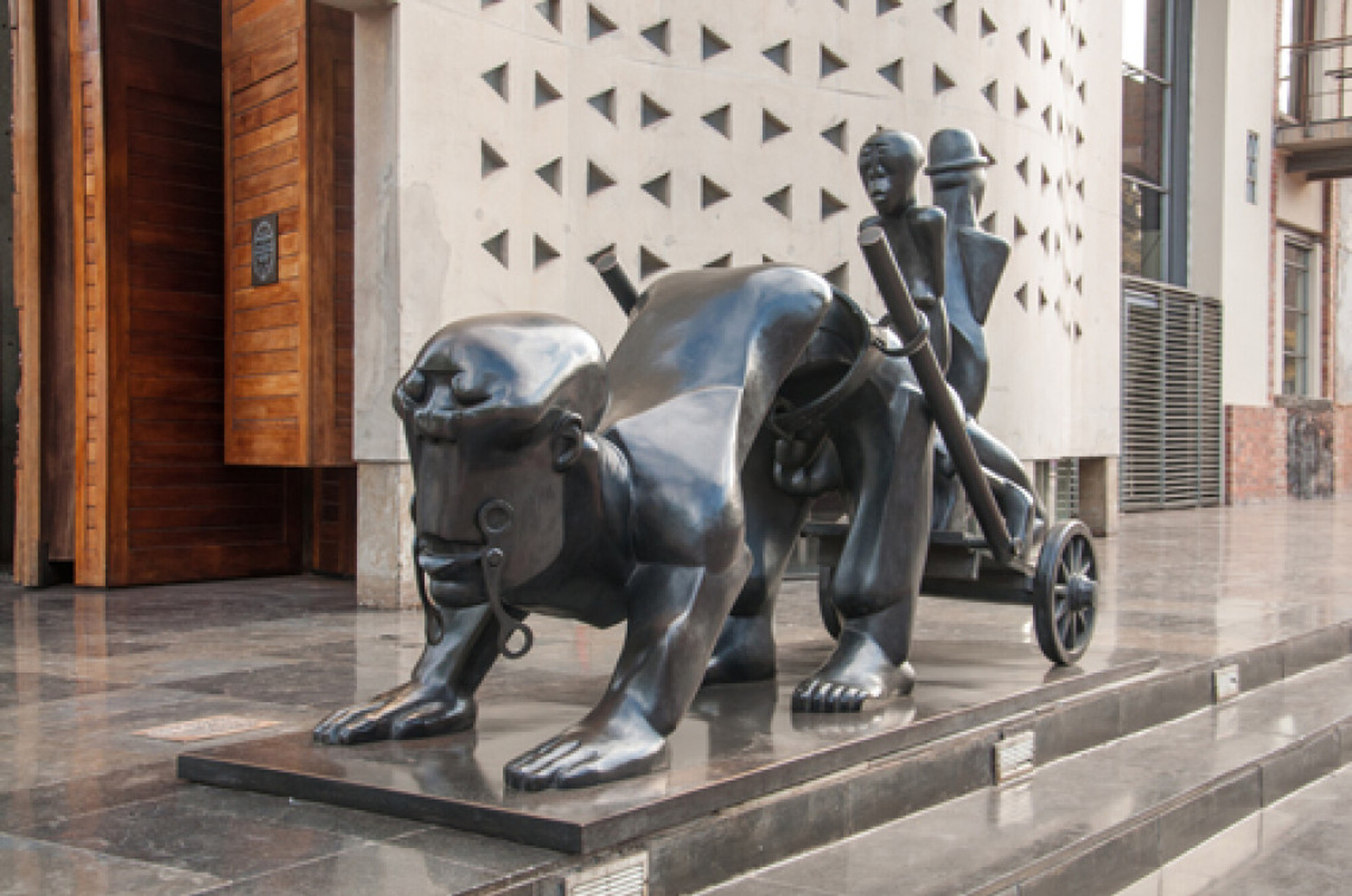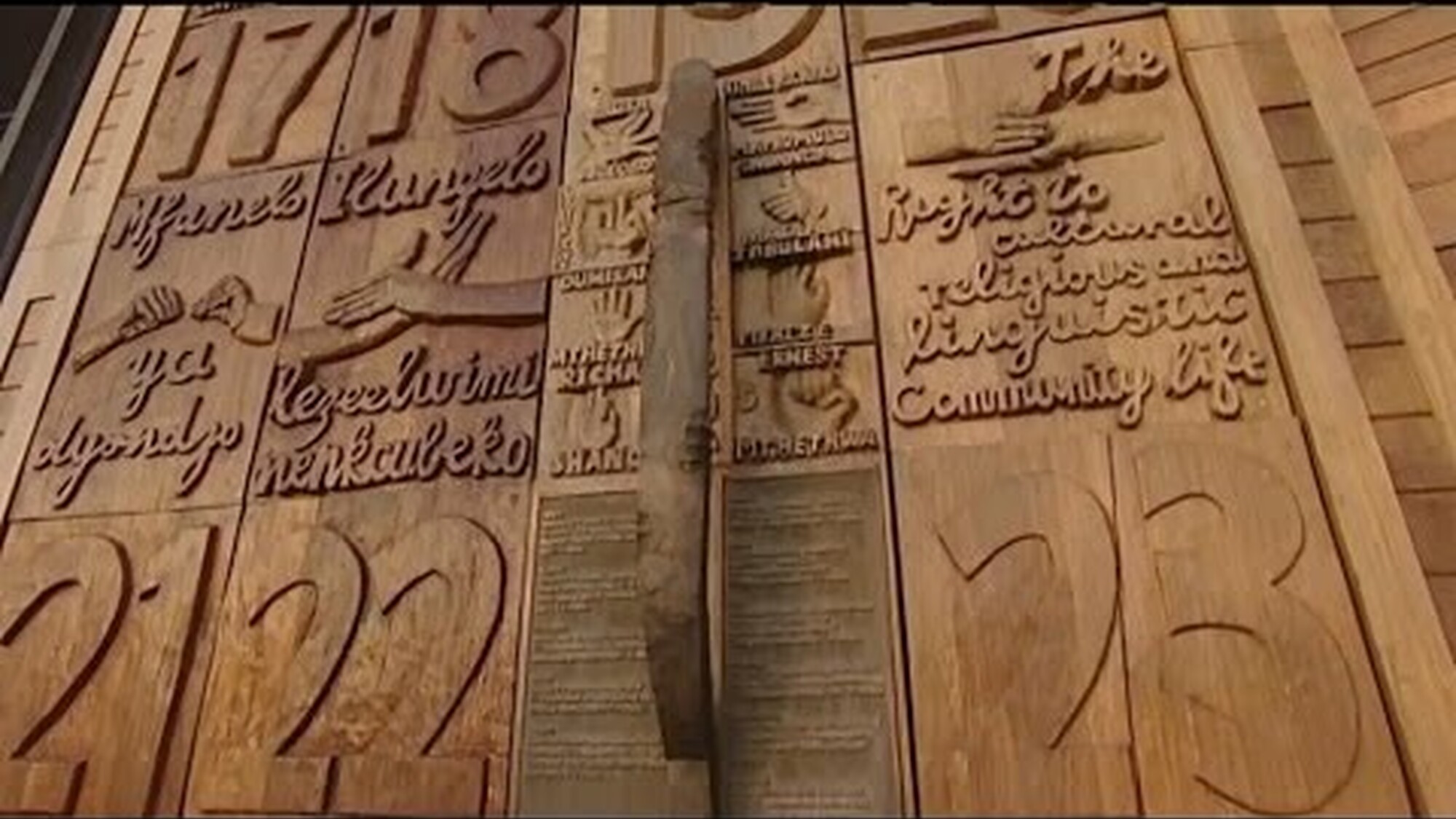The Collection

The CCAC continues to remind and inspire the South African youth of their heritage and of the sacrifice that was made on their behalf…
About the Constitutional Court Art Collection
The Constitutional Court Art Collection (CCAC) is more than a decorative addition to the Constitutional Court building. It provides a visual interface for the pursuit of justice for the public entering the highest court in South Africa.
In 1994 when the first eleven Justices were appointed to the Court, Justice Albie Sachs and Justice Yvonne Mokgoro were given the portfolio of decor. They were asked to use a minimal budget of R10,000 (about $3,000) to decorate the temporary courtroom with the dignity befitting the people that would move through it.
That budget was used to commission a single artwork – Humanity, by Joseph Ndlovu (fibre, 1995). which would provide a visual manifestation of the underlying principles of humanity. This tapestry was hand-woven by Ndlovu and stands as a testament not only to the birth of the Constitutional Court but also as an emblem of the promise of democracy in South Africa.
Since then, hundreds of artworks have been donated to the CCAC, today totalling over 800 items made by about 400 different artists and organisations, including works on paper and canvas, textiles, sculptures and mixed media, beadwork, some posters and video. Many other works are integrated into the architectural fabric of the building itself, which became the permanent home of the Constitutional Court in 2004.
It is a unique collection of predominantly South African artworks, many of which are internationally acclaimed, that stimulate and enrich education, critical debate and research on the transformative role of the Constitution and the Constitutional Court of South Africa, based on the values of freedom, dignity and equality.
The collection explores and interrogates the themes of transition, social justice, human rights, constitutionalism, identity, reparation and reconciliation in the South African context. Many works in the CCAC portray the political agency and lived experiences of the artist(s), others are more abstract and traditional, using form to evoke emotion and understanding – and to celebrate cultural diversity.
As Justice Albie Sachs argues: “Art and justice are usually represented as dwelling in different domains: art is said to relate to the human heart, justice to human intelligence. Rationality is sometimes seen as inimical to art, and passion as hostile to justice. Our building shows how art and human rights overlap and reinforce each other. At the core of the Bill of Rights and of the artistic endeavour represented in the Court is respect for human dignity. It is this that unites art and justice.”
Artwork donations from the generosity and goodwill of artists, galleries and donors see to the strategic and sustained development of the CCAC – now following a more structured approach than the initial serendipitous and haphazardly eclectic way of collecting.
The CCAC is managed by the Constitutional Court Trust for the benefit of the public, tending to its preservation and presentation through conservation and curatorial programmes. It is dependent on grants and donor funding to carry out this work.
The Constitutional Court Trust is an independent non-profit organisation established in 1995 that promotes human rights and the rule of law, constitutionalism and judicial independence in South Africa and Africa. It does so through artistic expression, public education, legal scholarship and exchange programmes, and library and information initiatives.
To learn more about the collection, download our PDF brochure (754 kb).
